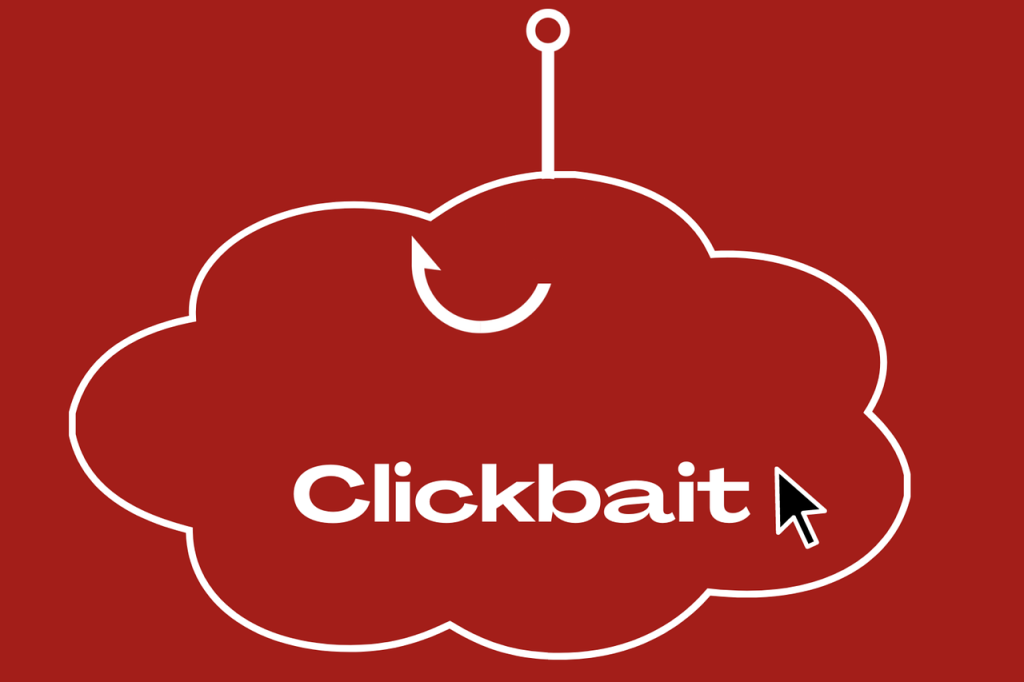
Clickbait is a form of online content that uses sensational or misleading headlines to entice people to click on a link. The purpose of clickbait is typically to drive traffic to a website or to generate ad revenue. The term “clickbait” originated from the fact that the headlines are designed to bait readers into clicking the links, which then directs them to a website where they can view the content.
Clickbait is often associated with online news articles, social media posts, and videos, but it can appear on any platform where content is shared. The content of the link may or may not be related to the headline, and it may not be of high quality or informative. Clickbait headlines are often written in a way that is designed to provoke an emotional response in the reader, such as fear, anger, or curiosity.
Headlines
One of the most common forms of clickbait is using hyperbolic or misleading headlines. For example, a headline that reads “You won’t believe what happened later” or “This will change the way you think about politics” is designed to create a sense of intrigue or curiosity in the reader. However, once the reader clicks on the link, they may find that the content is not as sensational as the headline suggests.
Clicks over Accuracy?
Clickbait is often criticized for being misleading and manipulative, and for prioritizing clicks over providing valuable or accurate information. Some argue that clickbait undermines the credibility of online news and diminishes the public’s trust in the media. Clickbait also can also be a way for publishers to make money by tricking users into clicking on ads, even if the content is not relevant or informative.
Misinformation, Propaganda, and Fake News
Another negative aspect of clickbait is that it can be used to spread misinformation, propaganda, and fake news. Clickbait headlines can be used to make false or exaggerated claims about a topic, which can then be shared on social media and spread quickly. This can be particularly dangerous in the context of political news, where clickbait headlines can be used to spread false or misleading information that can influence the outcome of an election.
Fact-checking
Fact-checking clickbait is important because it helps to identify and correct misinformation, increase credibility, increase trust in news and other forms of media, and make the process of news production and dissemination more transparent. By fact-checking clickbait, we can help to promote a well-informed public and a more robust democracy.
Not all Clickbait is Bad
Despite the criticisms of clickbait, it is important to note that not all clickbait is bad. Some publishers use clickbait in a way that is ethical and informative. Some clickbait headlines are written in a way that accurately reflects the content of the link, but that still provokes an emotional response in the reader. Additionally, clickbait can be used to promote important social issues or to raise awareness about a topic that might not have received much attention otherwise.
Summary
Clickbait is a form of online content that uses sensational or misleading headlines to entice people to click on a link. While it can be used in a way that is unethical and manipulative, it is important to note that not all clickbait is bad. It can be used to promote important social issues and raise awareness about a topic that might not have received much attention otherwise. However, it is important for consumers to be aware of clickbait and to be critical of the headlines they encounter online.
Related Studies & References
Logan Molyneux & Mark Coddington (2020) Aggregation, Clickbait and Their Effect on Perceptions of Journalistic Credibility and Quality, Journalism Practice, 14:4, 429-446, DOI: 10.1080/17512786.2019.1628658
A. Chakraborty, B. Paranjape, S. Kakarla and N. Ganguly, “Stop Clickbait: Detecting and preventing clickbaits in online news media,” 2016 IEEE/ACM International Conference on Advances in Social Networks Analysis and Mining (ASONAM), San Francisco, CA, USA, 2016, pp. 9-16, doi: 10.1109/ASONAM.2016.7752207.
Yimin Chen, Niall J. Conroy, and Victoria L. Rubin. 2015. Misleading Online Content: Recognizing Clickbait as “False News”. In Proceedings of the 2015 ACM on Workshop on Multimodal Deception Detection (WMDD ’15). Association for Computing Machinery, New York, NY, USA, 15–19. https://doi.org/10.1145/2823465.2823467